| Tokugawa Ieyasu with help from the Jodo monks of the Daijuji temple in Okizaki, defeats the Ikkō-ikki at the battle of Azukizaka, 1564 by Tsukioka Yoshitoshi |
A bird withOne body butMany headsPecking itselfTo death.
- An unknown poet
Japan. The late 16th-century. In this darkest and most violent age, endless war has left a country divided. A country, once ruled by a unified government, that has split into many warring clans. Legendary warlords strive for supremacy as conspiracies and conflicts wither the empire.
Instruments of a Warring Age
Armor Types
It is common for piecemeal and scavenged portions of these armors to find their way into the hands of desperate farmers, predatory bandits, and wandering ronin. Their mismatched crests and designs betray their lowly station. Wearing portions of these armors grants their benefits and vulnerabilities, but halves weight and increases its AC by 2 (max 8).
 |
| Okashi-gusoku. |
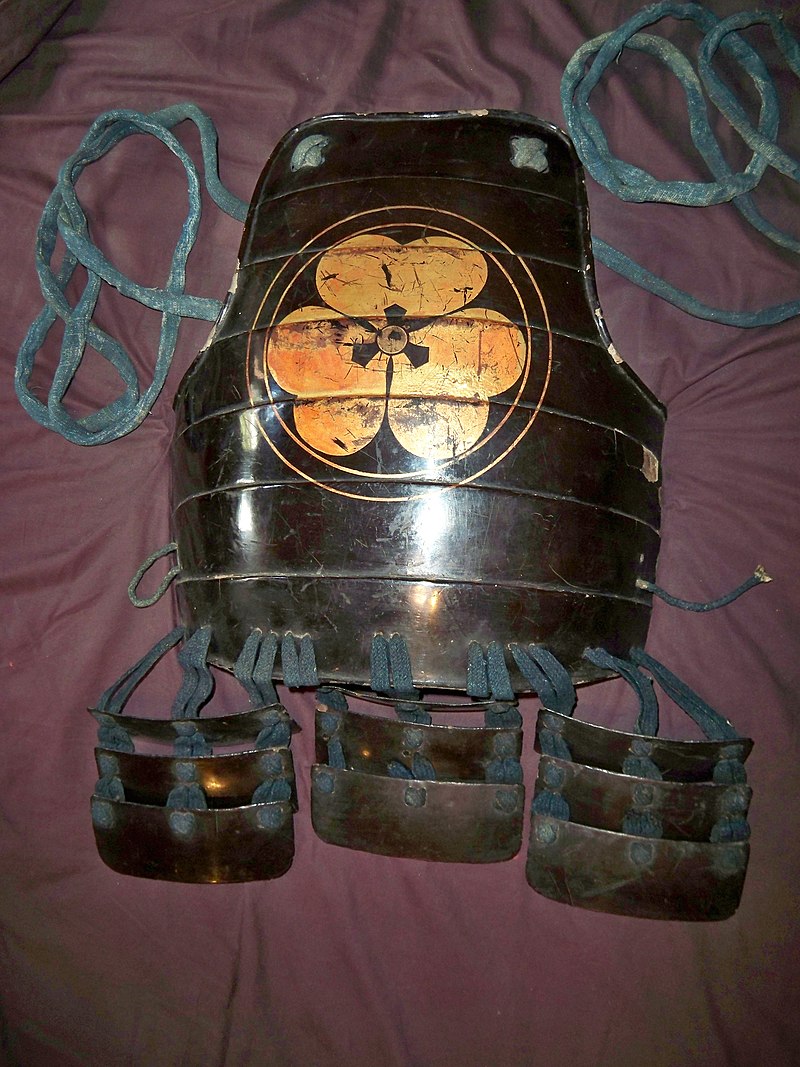 |
| Okashi-gusoku. |
Okashi-gusoku: Munition-grade, plain armor mass-produced and loaned to low-ranking ashigaru. These often have inventory numbers written inside or large crests on the chest. [AC 7].
 |
| Tatami-gusoku. |
Tatami-gusoku: Lightweight portable folding armor consisting of small iron or leather plates connected by mail. Its collapsable nature made it convenient for transportation. However, this extreme flexibility makes it vulnerable to penetrating or blunt attacks. [AC 6, 7 vs bludgeoning and piercing].
 |
| Tosei-gusoku. |
 |
| Tosei-gusoku. |
Tosei-gusoku: Modern armor made from plates of iron instead of the individual scales used in the old-style armor. This armor is emblematic of the samurai of the age, though many variations of its design and manufacture can be found throughout the land.
Lower-ranking samurai tend to wear simplified and relatively plain designs while those with a certain amount of wealth can afford to emphasize a surprising amount of individuality. [AC 5, penalty on athletic action & stealth].
 |
| Nanban-gusoku. |
Nanban-gusoku: Western-style plate armor imported from or inspired by the Portuguese. It is imported, expensive, and heavy but has a notable reputation for being bullet-resistant. [AC 3, 2 vs bullets and missiles, penalty on athletic action and stealth].
.jpg/800px-Face_Guard_(Shirohige_Ressei-menpo).jpg) |
| Menpō. |
Menpō: Iron, leather, or a combination of both which covers the face from the nose down to the chin. Can be combined with a kabuto. [Protects against injury to the face and neck].
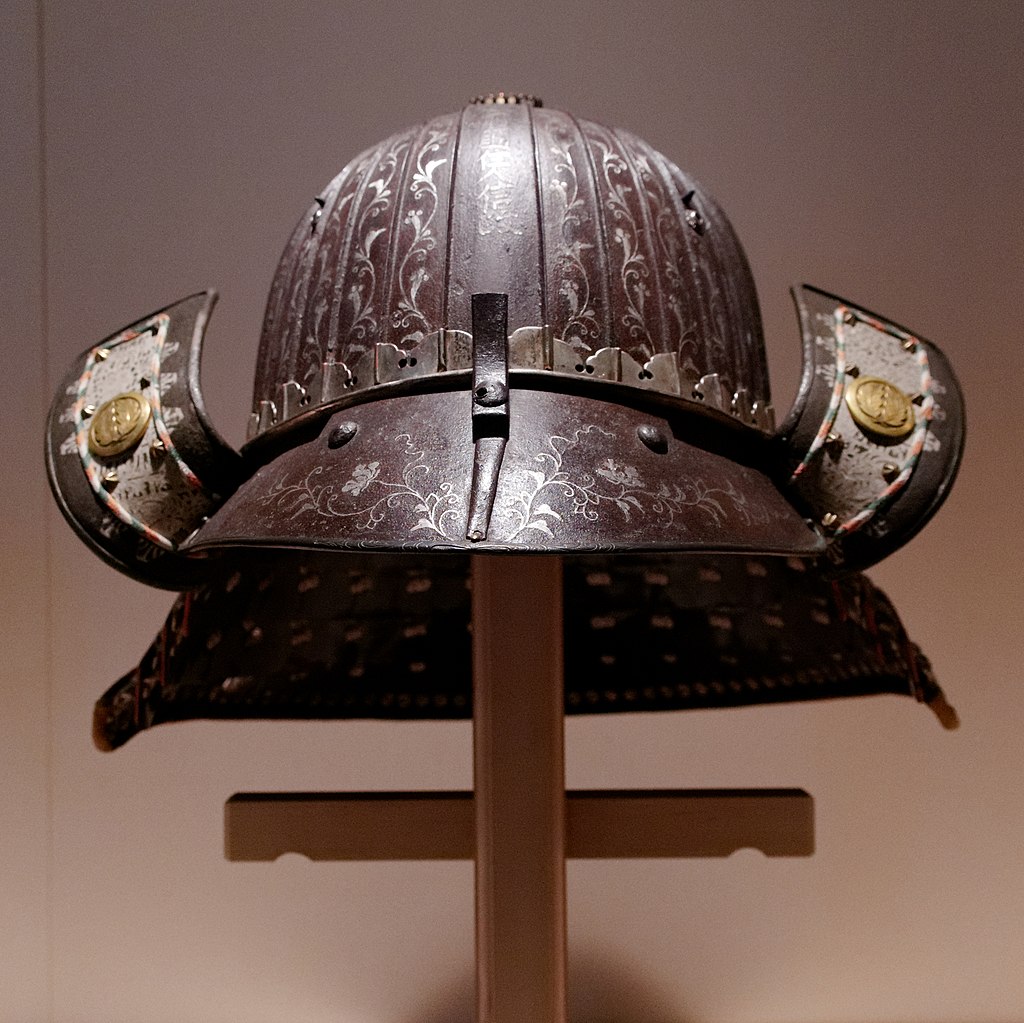 |
| Kabuto. |
 |
| Kabuto & menpō |
A type of conical war hat called a jingasa is worn by ashigaru and samurai alike. It was often made from leather or metal.
Weapon Types
 |
Tantō. |
 |
| Tantō. |
Tantō: A short, stabbing dagger often made with highly ornate decorations although the great demand of blades means that there are plenty of lower quality examples. They are often worn in a pair with the older style tachi (sword). [Piercing damage].
Women often carry a small tanto called a kaiken (dagger) in their belt for self-defense. Such weapons are traditionally given as wedding gifts. [Halved piercing damage].
.png/1024px-%E8%84%87%E5%B7%AE%2C_Blade_and_Mounting_for_a_Short_Sword_(Wakizashi).png) |
| Wakizashi. |
Wakizashi: A short companion sword worn at the side used as a backup or auxiliary sword. It is well suited to close-quarters fighting, beheading defeated opponents, or even committing seppuku.
Often worn with a katana in a pair called a daishō. When entering a castle, palace, or another notable dwelling it is customary to leave the longer blade and continue to wear the wakizashi inside. [Slashing damage].
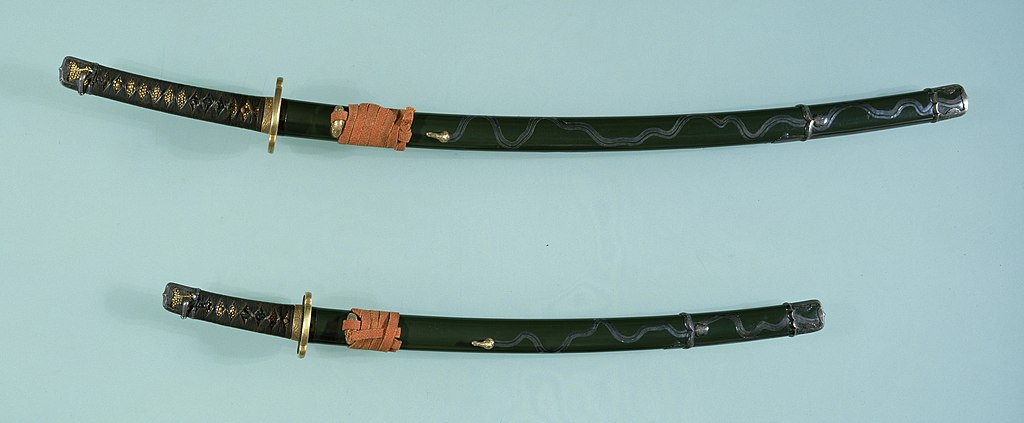 |
| Daishō style mounted katana and wakizashi. |
 |
Katana. |
In these violent times even farmers, townspeople, and monks can own a sword, however, certain lords are known to conduct sword hunts to forcibly remove such blades from anyone identifying as a farmer. [Slashing damage].
 |
| Tachi. |
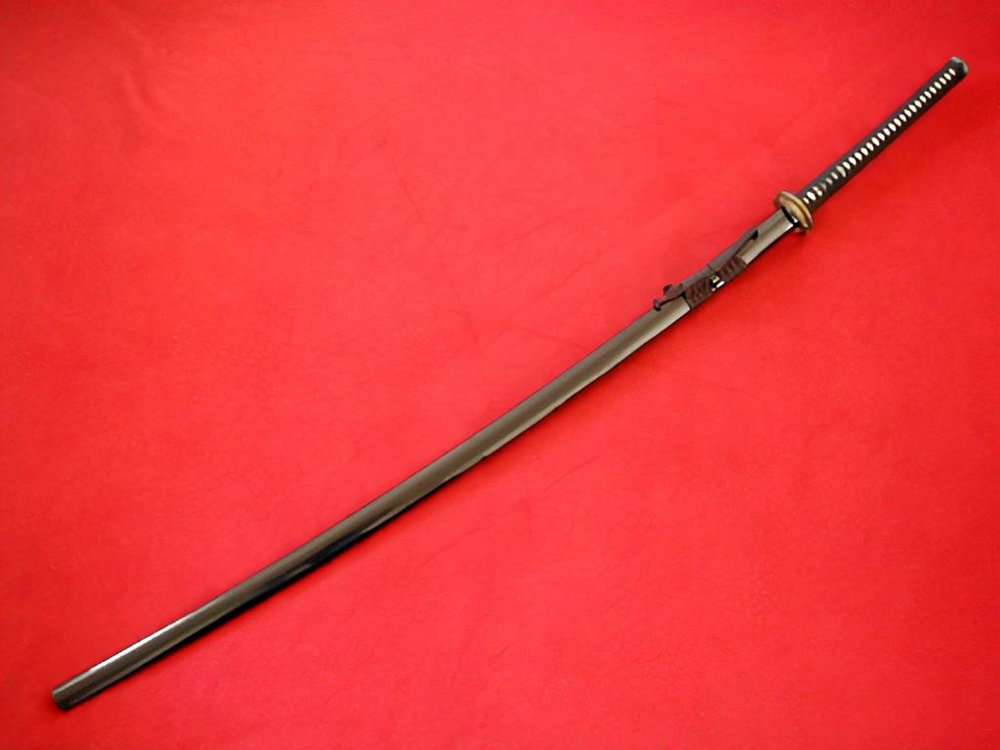 |
| Ōdachi |
Despite their lethality, the usage of such blades is dying out and they are often considered impractical on the battlefield. [Slashing damage +1].
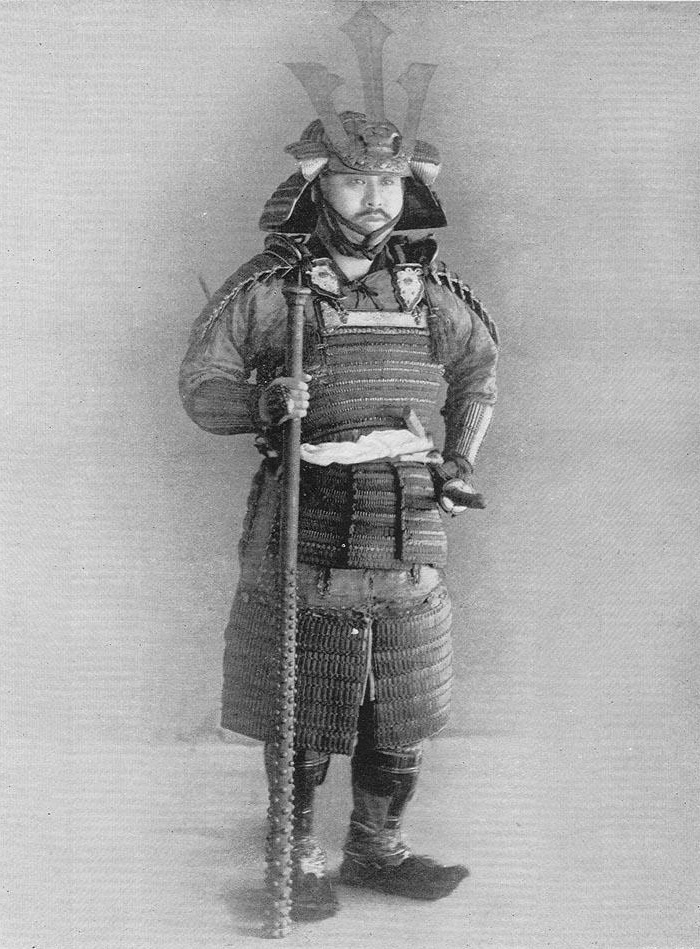 |
| Samurai holding a kanabō. |
Kanabō: Club-like weapons constructed out of heavy wood or made entirely out of iron, with iron spikes or studs. These clubs come in all shapes and sizes, with the largest being two-handed and as tall as a man, while smaller ones are one-handed and the length of a forearm. [Bludgeoning damage, +1 damage for two-handed varieties].
 |
| Three yari (Kagi yari, omi yari and su yari) mounted in koshirae. |
Yari: A long, straight-headed spear. Its lighter weight makes it perfectly suited for both thrusts and sweeping slashes but these advantages become liabilities if the enemy gets in close. [Piering damage, reach].
| Yumi. |
 |
| Tanegasima. |
Taniegashima: Matchlocks based on those introduced by the Portuguese. These weapons have been wholly embraced in this violent era and have become the most important arms in the country. [Piercing damage +1, alerts wandering foes, pierces most armor].
The largest handheld versions of these are called Ōdzutsu (hand cannon) and have more in common with small artillery than a handheld rifle. [Piercing damage +2, alerts wandering foes, pierces most armor].
Inspired by the very cool Straits of Anián! A very neat format to take a look at OD&D.
No comments:
Post a Comment